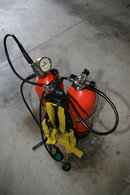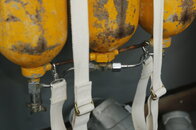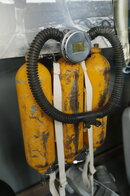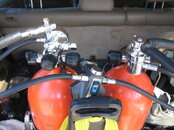Stoo
Contributor
- Messages
- 3,505
- Reaction score
- 3,797
- # of dives
- 5000 - ∞
I occasionally dive with my manifold closed, but generally only in the very early (i.e. friggin' cold) part of the season, when the odds of a freeze-up is amplified. To be honest, I'm not convinced there's a huge advantage as Doppler points out... it's about a 3 second exercise to isolate and only a few more to shut down the post. (I think I do it because I practice isolator shutdowns and the "swoosh" of tanks equalizing tanks is confirmation that everything is working as it should!)
If someone was to do this enthusiastically, and assuming that they are in frigid water as I am in the spring (Great Lakes), I would not let the differential pressure get as high as 1000 psi. I suspect that there is some risk that this could increase the odds of condensation forming in the higher pressure tank as it quickly equalizes. Any condensation at all could cause havoc with regs freezing, as well as drysuit and BC inflators.
The other downside of diving with the isolator closed is the SPG doesn't reflect the actual PSI in the right tank (assuming you are diving the typical configuration). This could be remedied by adding a second SPG to the right tank, but this alone increases potential failure points, and possibly increases a divers tasks to perform.
As a matter of course, I tend to have my isolator only open a small amount so that shut-down could be accomplished in a turn or two.
All of this reminds me it's time to start stretching my shoulders out again...
If someone was to do this enthusiastically, and assuming that they are in frigid water as I am in the spring (Great Lakes), I would not let the differential pressure get as high as 1000 psi. I suspect that there is some risk that this could increase the odds of condensation forming in the higher pressure tank as it quickly equalizes. Any condensation at all could cause havoc with regs freezing, as well as drysuit and BC inflators.
The other downside of diving with the isolator closed is the SPG doesn't reflect the actual PSI in the right tank (assuming you are diving the typical configuration). This could be remedied by adding a second SPG to the right tank, but this alone increases potential failure points, and possibly increases a divers tasks to perform.
As a matter of course, I tend to have my isolator only open a small amount so that shut-down could be accomplished in a turn or two.
All of this reminds me it's time to start stretching my shoulders out again...








